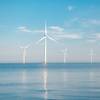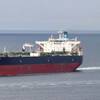Cavernous Swiss Power Plant Undermined by Renewable Energy
Deep in a Swiss mountain, workers have blasted out a cathedral-sized hole for a power plant that will help keep Europe's lights on, but the profit outlook for the 1.9 billion Swiss franc ($2.1 billion) project has darkened since its construction began in 2008.
The Nant de Drance plant, and others like it, is being undermined by cheap renewable solar and wind energy, which up-ends its business model of pumping water uphill at night when power prices are low and releasing it to make electricity when prices peak in the daytime - a process known as pumped storage.
These pumped storage plants are designed to balance Europe's power supply grids as they can switch on and off at the flick of a switch, unlike nuclear or coal-fired power plants.
When work started on Nant de Drance, its shareholders - a consortium led by Swiss utility Alpiq - hoped to make healthy returns.
But then things changed. Power is still cheap at night, but the traditional daytime price peak has gradually disappeared as fast-growing solar capacity in Germany floods the grids with power around midday.
As a result, Nant de Drance and some other major Swiss pumped storage projects now look a lot less profitable. Several projects in Switzerland, Germany and Austria have been put on ice. But for Nant de Drance, it was too late to stop digging.
Since 2008, workers have cut 17 kilometres of tunnels, excavated nearly 2 million cubic metres of rock, and are finishing two 425 metre deep vertical shafts that will drop water onto the Swiss plant's six turbines from an altitude of 2200 metres. Together, they will generate 900 megawatt, as much as a nuclear plant.
At 194 metres long, 52 metres high and 32 metres wide, the machine cavern of Nant de Drance has an interior volume bigger than the Paris Notre Dame cathedral.
"Welcome to the centre of the earth," Nant de Drance director Eric Wuilloud said while driving along the five kilometre access tunnel into the cavern, which could easily double as the headquarters of a Bond movie villain.
Over the next three years, Austria's Andritz will install metal tubing, France's Alstom the generators, and the height of the storage dam will be increased to double its capacity to 25 million litres, enough to run its generators as long as 20 hours continuously.
The first turbines will go online in 2018, but turning a profit from it could take years, given the market backdrop.
Even a state-of-the-art plant like Nant de Drance loses 20 percent of the energy it pumps and older plants 25-30 percent. They need to sell electricity for at least 1.3 times the price paid to pump water up, and that is before capital costs.
Andreas Stettler, head of hydropower at Swiss utility BKW, said that in 2007 power prices during the 1500 most expensive hours of the year were five times higher than during the 2000 cheapest hours, but around 2011 this ratio fell below two.
"Most pumped storage plants need a ratio of at least three to operate profitably," he said.
Reuters calculations based on data from power market Epex show that in the year to date, median daytime German-Austrian peakload power prices (9 am to 9 pm), at about 35 euros per megawatthour (MWh), were just 17 percent higher than median nightime prices at 30 euros.
In 2013, the premium was 26 percent, down from 40 percent in 2009 and 79 percent in 2007.
Not only has the peak spread narrowed, but the renewables boom has led to overcapacity and Europe's economic crisis has hit power demand. This has pushed German wholesale power prices, now around 35.70 euros per MWh, to less than half their 2008 highs.
With prices that low, even gas-fired generators can compete with storage dams to provide extra supply to the power network.
DAMS FROZEN
Alpiq's rival Axpo is building another big pumped storage plant, Linth Limmern, and when both projects are finished, they will will add more than 2000 MW of pumped storage capacity to Switzerland's 1400 MW existing capacity.
But two other storage projects with a combined capacity of 1630 MW - BKW's Grimsel 3 and Repower's Lago Bianco - have been suspended. Other European dam projects, including Austrian utility Verbund's Reisseck 3, have also been put on ice. In May, German utility RWE pulled out of its 1400 MW Atdorf project with EnBW.
The turmoil in Europe's power markets has hit not only the Swiss utility companies but the country's trade balance. Switzerland's pumped storage industry has made it the battery of Europe. In 2008 it earned 2.1 billion francs from power exports.
By 2012 this fell to just 771 million francs - still more than the 760 million francs Switzerland earned from chocolate exports and the 576 million francs from cheese. Last year, power contributed just 327 million francs.
Like their EU peers, Swiss utilities have called for a cut in wind and solar power subsidies. The Swiss association of power producers VSE is calling for a mechanism that would pay pumped storage plant operators for the back-up they provide.
"We would favour a market-based system with different capacity prices per week," VSE president Kurt Rohrbach said.
The argument is that profitable or not, pumped storage plants are essential for balancing power supply grids, which can suffer blackouts if supply and demand do not match. Only pumped storage plants can suck up excess electricity and then release it again within minutes.
Other storage tools like utility-size batteries, compressed air and flywheels are still in the experimental stage.
Market conditions could change over time. Higher power prices, a rise in CO2 emissions prices, cuts in renewables subsidies, unexpected nuclear plant closures or some form of capacity payments could make pumped storage economical again.
If solar energy continues growing as quickly as it did in the past decade, the power market could even be turned upside down so that prices become cheapest at noon - which could boost pumped storage profits.
"One could imagine that in the future they would pump up water at midday and let it down in the morning and evening," St. Gallen university professor Rolf Wuestenhagen said.
Such a fundamental market shift will take years, but then pumped storage plants are very long-term investments.
"Economic conditions are not great for pumped storage plants at the moment," said Nant de Drance's Wuilloud.
"But we have an 80-year concession," he added. (1 euro = 1.2090 Swiss franc) (1 US dollar = 0.9146 Swiss franc) (Reporting by Geert De Clercq; Editing by Jane Merriman)













